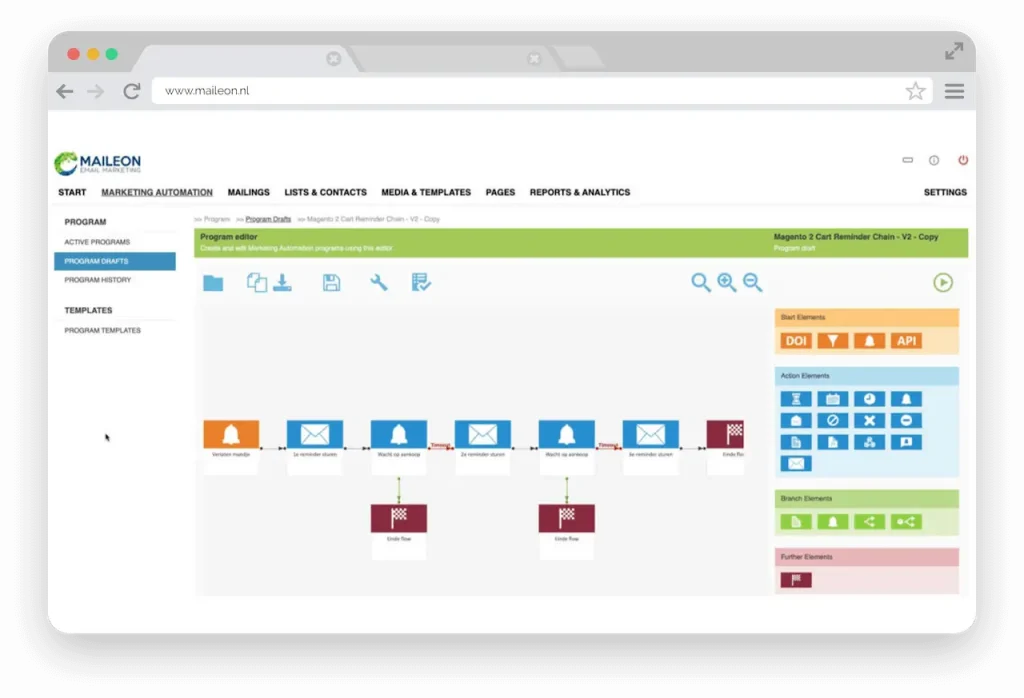
How to use email automation effectively?
Automation is one of (if not the!) most revolutionary things to hit email marketing in the last decade. Teaching your clients how to use automation effectively will set them up for success.
Here, I’ll run through some of the ways your clients can use automation to reach their full potential. What works best will vary from client to client, but you can adapt these tips to each client’s circumstances:
Automate key journeys
One of the (many!) beauties of automation is that it can respond immediately to preset triggers. This is very, very useful when it comes to key points in customer journeys.
The classic example of this is order receipts, like the Amazon one shown below.
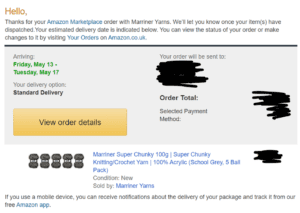
No matter how efficient your client’s ecommerce operation is, it is impossible for them to manually send a receipt and/or delivery notice within minutes of each order. For the right automation, though, it’s easy. Simply set up a template with dynamic fields, take the right information at point of purchase, and bingo! The customer receives a reassuring receipt within moments of their purchase.
A good order confirmation email will not only let the customer know that their order has been received and is being processed, but will show them that the company has the right address, and maybe even give an estimated delivery date.
Receipts/order confirmations are, as I said, the classic example of automated points in customer journeys. But there are many more points which could benefit from automation. Here are just a few ideas:
Onboarding
It’s nice to greet your customers when they jump on board! A welcome email triggered to launch at the moment of subscription always goes down well.
Some companies build entire onboarding journey templates, with automations sent out at specific points. As the customer experiments with and learns more about the brand’s product, a series of emails might be generated to give more information and help them through key milestones.
Duolingo is well known for doing this. Here’s one of Duo’s onboarding series, giving the customer tips on how to get the most out of its platform:
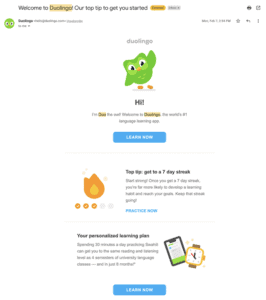
Anniversaries
All relationships have special dates. The date you met, birthdays, significant festivals, that kind of thing. Brand/customer relationships are no different.
The problem is that you cannot possibly remember every single customer’s birthday, or the anniversary of their first purchase. And manually sending out emails for each and every such occasion would be a full-time job.
Luckily, automations exist to do it for you. All you have to do is set up some anniversary template emails, make sure that they’re fed the right data, and the system will do the rest. Here’s an example from Lumosity – which contains a discount on their premium offer as an extra anniversary gift/incentive…
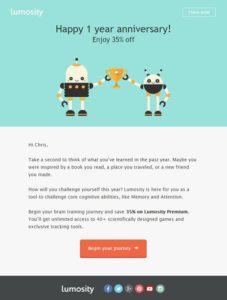
Cart abandonment
Take a deep breath, because I’m about to drop a scary statistic. As of 2022, abandoned carts worldwide had a value of $4.6 trillion. Yes, TRILLION.
That’s a lot of revenue moldering away in the digital baskets and carts of the world. But the right automation can help your clients retrieve their portion of the money. Automated cart-abandonment emails have a high success rate.
This example from Blue Mercury compliments the customer on their choices. It also gives a visual reminder of what they’ve left in their basket. Pictures are often more effective than words when it comes to triggering conversion. Humans are very visual creatures, and we are more likely to act on impulse when we see something nice than we are when we hear or read about it.
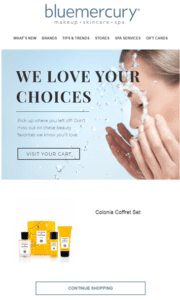
These are far from the only journeys your clients can automate. Other common examples include:
- Re-engagement emails
- ‘Out for delivery’ notices
- Thank you emails
- Feedback requests
- Product recommendations
- Sale notifications
- Replenishment reminders
…and more!
Feed automations with the right data and content
All the automated journeys I’ve mentioned are at their best when they’re giving the customer personalized content that’s relevant to their situation and needs.
Automation can, potentially, deliver highly personalized content. With dynamic content fields and blocks, email templates will morph and change to suit each customer’s particular circumstances. In this example from Brooks, the content changes depending on the weather in the recipient’s location:
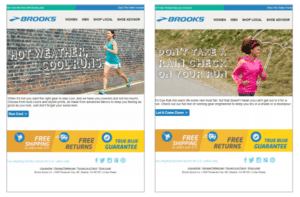
Automations can also dispatch emails at the perfect time for each customer, or in response to their own, personalized triggers. Landing in the inbox at exactly the right time can make a huge difference to an email’s conversion rate.
So, all in all, automated emails have the potential to do a lot. But they need the right data to do it. You can’t send out an email at the perfect time if you don’t know what that time is. And you can’t alter content depending on the weather unless you know the weather forecast!
For automations to deliver that great, personalized content, they need a hefty diet of data. Your clients will need to gather, organize, and feed out the right data consistently in order to get the right results.
Ethical data collection and management is an absolute must. But management is also important. It’s vital that your clients frequently clean and review their lists and databases. Otherwise, their automations will be working with stale data – and stale data can produce some real email abominations! Take a peek at this awful example:
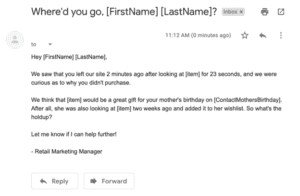
So, make sure that your clients are feeding their automations a diet of clean, fresh, and well-kept data!
Effective automations are a game-changer – but don’t get complacent!
Once you’ve helped them set up their automations, I can guarantee that your clients will be bowled over by the results. Automations can deliver the kind of personalized, immediate content that brings conversions.
However, before you leave your clients with their shiny new automated journeys – please warn them against complacency!
It is fantastic to embrace automation – but all too often I see brands embrace automation to the point that they get complacent. They start to rely on automations, and lose sight of the fact that automations are only as good as the human marketing team that’s running them.
It’s important that we’re vigilant and diligent about feeding and maintaining our automations. We shouldn’t just leave them to do their own thing – because, without human marketers, they’re useless.
So, teach your clients about the wonders of automation. Walk them through the wonders of dynamic content, triggered journeys, and all the rest of it. But thread your advice with the need to maintain the human element.
Automation will take a lot of pressure off your clients – but that doesn’t mean they should leave their automations to do their own thing!
Automations are at their very best when they work together with a team of engaged, productive, and enthusiastic human marketers. So, once you’ve converted your clients to automation, don’t let them get complacent!
This might also interest you?
-
No-reply emails are (not) the answer
No-reply emails are (not) the answer
-
DOI reminders: essential or excessive?
When it comes to email marketing, the double opt-in (DOI) process remains a core pillar for establishing trust with your subscribers.
-
Emails Accessible: Ensuring Readability for Everyone
By leveraging the right email flows, franchises can create a unified brand experience while catering to local market needs. Discover more.

Let’s talk!
Whether you’re looking for a new platform, a partnership or just want to have a cup of coffee and a chat: we’d love to hear from you.
